Help shape the 2025 Lab Efficiency Report!
Take the survey now.
If you’re comparing LIMS solutions and are torn between 1LIMS and LABWORKS, this guide is for you. LABWORKS delivers enterprise-grade configurability and deployment control, while 1LIMS makes everyday workflows fast and simple. In this quick read, we cover industry fit, rollout speed, integrations, compliance, and pricing so you can see which platform fits your lab.

Most LIMS comparisons start with feature checklists. Features do matter, but only if they match your lab’s actual processes. Given this fact, we put together a fair, side-by-side look at LABWORKS vs 1LIMS that includes both features with workflow fit.
Now, what’s the difference between LABWORKS and 1LIMS? The two platforms lean in different directions: LABWORKS offers heavyweight configurability and deployment control; 1LIMS focuses on speed, simplicity, and cloud-first operations. Now onto details.
Below you’ll find a feature-by-feature walkthrough, a cost breakdown, and industry fits, so you can imagine each system in your lab. Our goal is to help you pick a platform your team will actually enjoy using (even if it isn’t ours).
Let’s quickly introduce both platforms before diving into specific features.
1LIMS is a cloud-first LIMS built for everyday speed and traceability. It’s quick to use and easy to understand, so even non-technical teams start using it in record time. As a SaaS product, hosting and updates are handled for you, and your lab can have 1LIMS up and running in roughly a month.
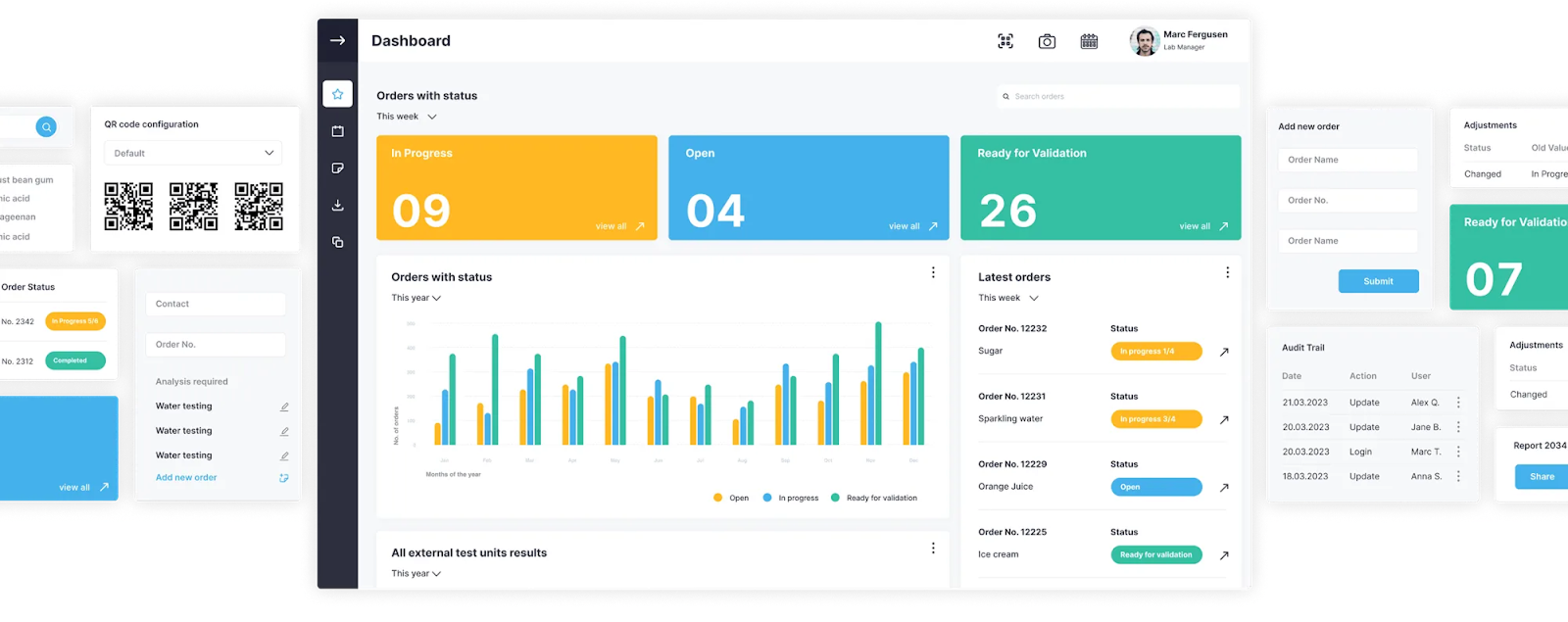
LABWORKS is a configurable, full-featured enterprise LIMS for teams that need tighter control and industry-specific workflows. It fits well in complex IT environments, as it has broad APIs and integration options (ERP, QMS, ELN, MES) and flexible deployment (cloud, hosted, or fully on-prem).

Here’s a quick look at both:
Now, let’s take a closer look at both and make a main feature comparison.
Here’s a short walkthrough of how 1LIMS and LABWORKS handle the same core steps.
In 1LIMS, you print a label, scan a QR code, and the sample’s entire story is there: master data, custody, prior results. So logging a rack takes mere minutes, not an hour. Batching and sample management are straightforward, which helps when ten deliveries show up at once.

LABWORKS takes a more engineered path. Intake screens are designed by admins, with required fields, rules, and barcode logic that keep sites consistent. It’s deliberate by design, ideal when you care as much about the form as the data.

1LIMS lets you set risk rules and then gets out of the way. Frequencies adapt to supplier performance, volume, or history; if something is out of spec, re-tests appear without a round of emails. Planners see a clear picture of bench load.
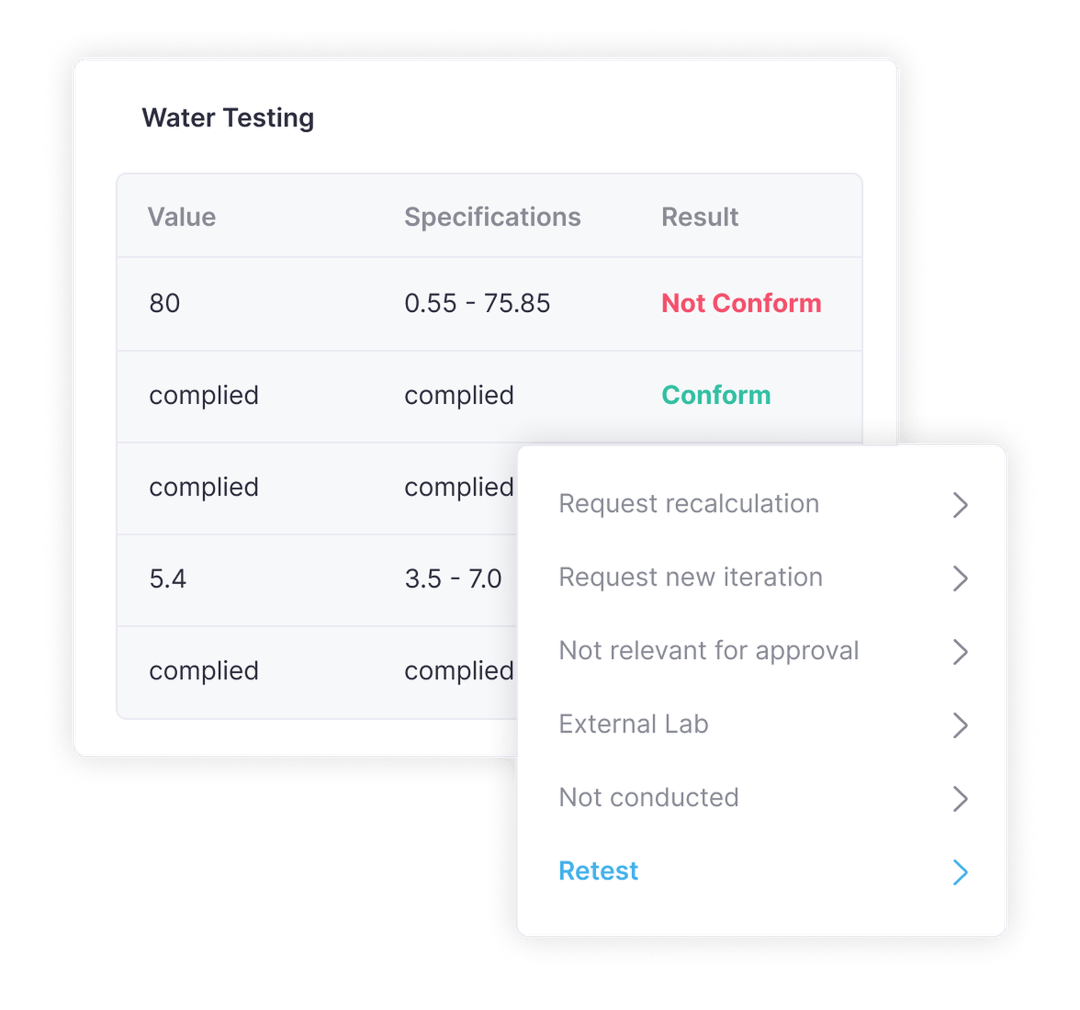
In LABWORKS, schedules live inside configurable templates that encode complex rules, roles, and resource constraints. Routing follows the rules you define, the same way every time, across sites. It’s the “enterprise way”.

In 1LIMS, lab managers drop an instrument file, and the mapped results land where they belong. Orders to partner labs and result imports come back smoothly, which suits mixed in-house and outsourced testing.

Plus, 1LIMS can be integrated with your ERP, MES, CRM, and other internal software, as well as laboratory equipment and external service labs.
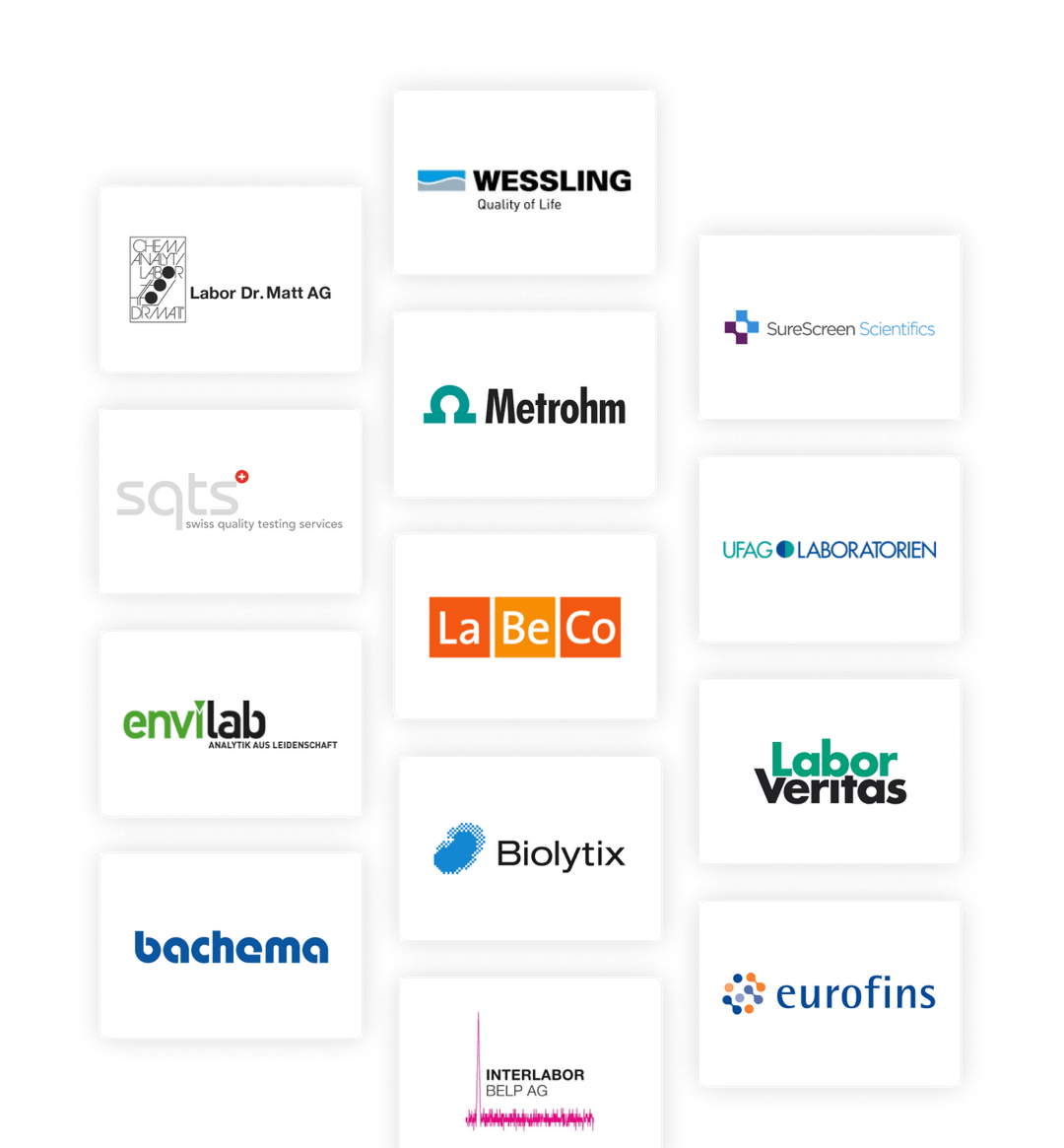
LABWORKS is the integrator’s playground. Drivers and APIs wire instruments directly, data moves both ways with the rest of your stack (ERP, QMS, ELN, MES), and there are proper error queues when something doesn’t go right.
In 1LIMS, report creation is built for speed. Approvers review results, apply an electronic signature, and generate a COA from the same screen. Templates are ready to use and easy to tweak (logos, sections, units, limits), so once your layout is set, most batches move from verification to signed COA in a few clicks.
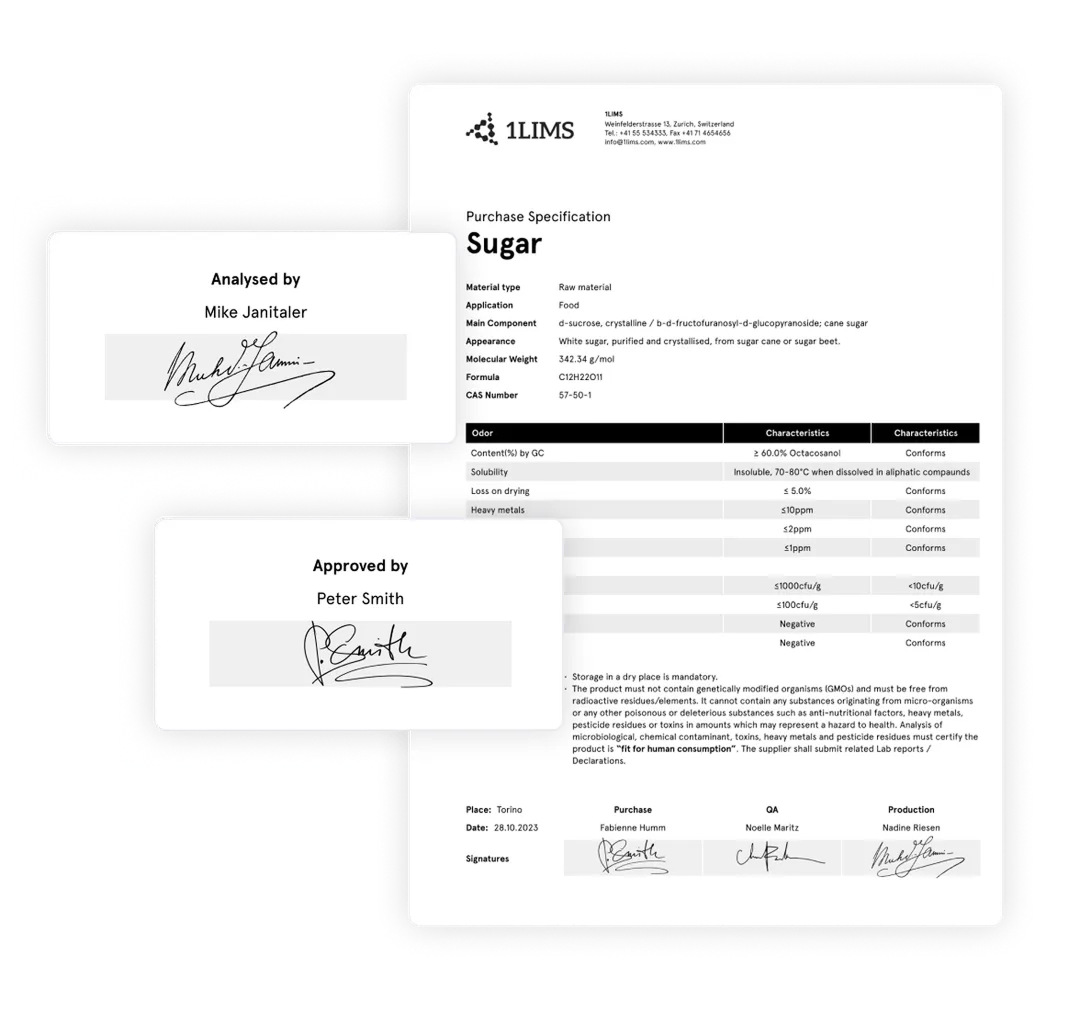
LABWORKS takes a governance-first approach. Reports sit inside layered approvals with detailed audit trails, and dashboards make it clear what’s pending, who’s responsible, and what changed along the way. It’s designed for teams that need strict separation of duties and documented review steps across sites.

1LIMS builds QC laboratory compliance into daily work with versioning and change control, role-based approvals, and automatic, time-stamped audit trails you can pull by batch to see who did what, when, and where. The platform also supports supply-chain traceability (ERP order → test order) and permissioned access in a secure cloud setup, aligning with ISO expectations for electronic records and signatures.
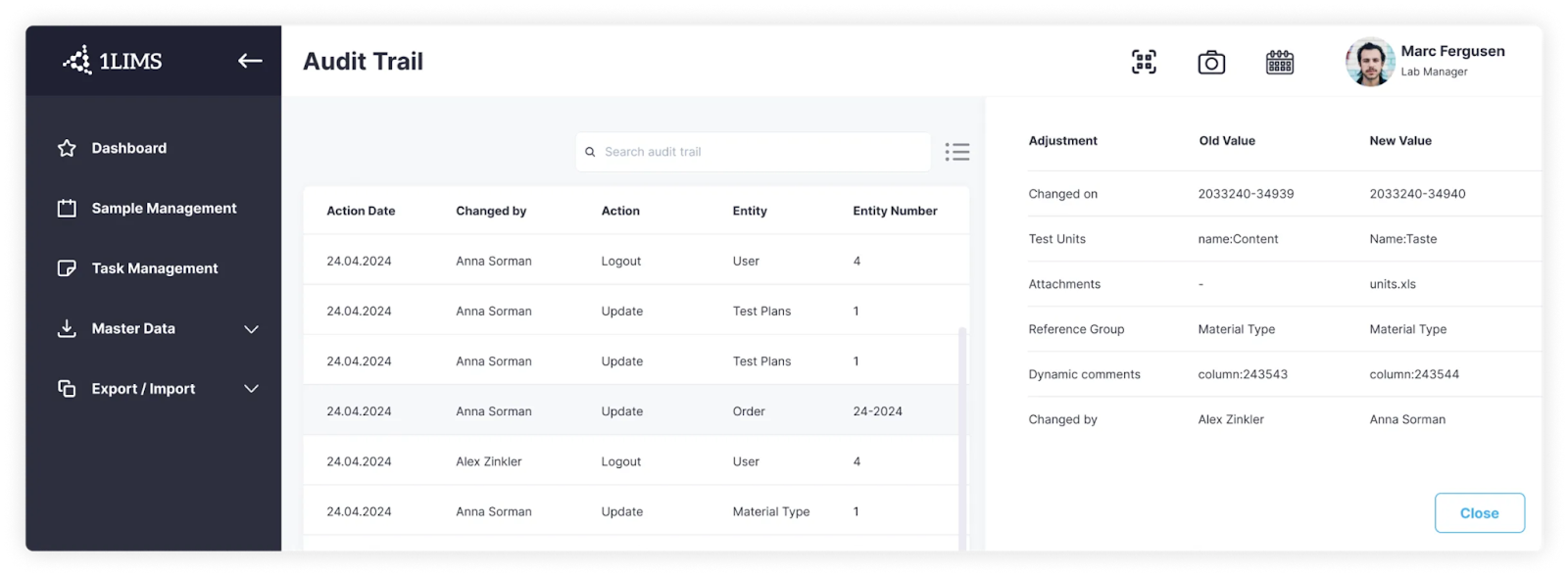
LABWORKS treats compliance as an active workflow: the system monitors regulatory changes in real time, alerts your team, and helps drive the required updates so methods, limits, and documents stay current.
Now that we’ve covered the feature differences, let’s talk about the part everyone cares about: what it costs.
1LIMS is a subscription-based SaaS that scales with users, modules, and annual analysis/order volume. Typical subscription fees range $50–$111 (€43–€95) per user/month. As your lab grows, you can add modules; most add-ons are about $70 per user/month. Average total adoption (first year software + services) for many clients lands around $6,000–$30,000 (€5,150–€25,200).
1LIMS has a reputation as a cost-efficient LIMS because it’s designed to deliver maximum value with minimal overhead.
Here’s why 1LIMS costs less than most other LIMS solutions:
👉 1LIMS is best for labs that want flexibility, expect to evolve, or prefer predictable SaaS costs.
LABWORKS' cost is quote-based and driven by several factors:
Because implementations often cover multi-site and regulated environments, plan for a larger services footprint with configuration, validation/CSV, data migration, and enterprise integrations.
👉 LABWORKS is best for labs that need full deployment control and enterprise-grade configurability, even if it means higher investments upfront.
If you’re considering a LIMS but aren’t sure it’s worth it, we offer a one-day on-site or remote lab evaluation. Our experts can review your end-to-end workflows, identify bottlenecks, and quantify down to the dollar how much time and cost you can save with a LIMS.
Finally, which industries benefit most from each platform when comparing 1LIMS and LABWORKS?
If you map by how your lab operates rather than by feature counts, the fit becomes clear.
1LIMS suits labs that want to move fast on a clean, cloud-first setup with the strongest fit in food & beverage, plus material testing, and many environmental workflows.
LABWORKS fits labs that need enterprise-grade configurability and deployment control, especially utilities and multi-site or public-sector operations where chain of custody and cross-site consistency are non-negotiable.
Here’s a quick sum up:
If you still hesitate on which solution to pick, we’ve prepared some questions for you. Each line gives a +1 to the platform it favors, add them up and see which way your lab leans.
If you need speed, predictability, and lower total cost, 1LIMS is the easy choice, especially for food & beverage labs that want fast intake, strong traceability, and a SaaS rollout.
Still, some lab teams need heavyweight configurability and strict deployment control. If that’s you, we get why you’d choose LABWORKS.
If you’d like to see how 1LIMS handles your real workflows, book a no-obligation demo and judge it with your own eyes.
And if you’re considering other LIMS, take a look at our comparisons with Labguru and CloudLIMS.